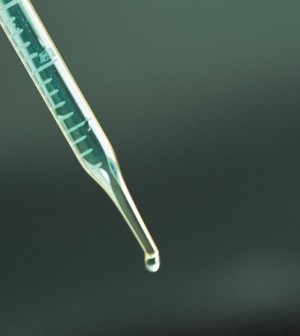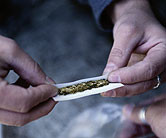- Navigating Your Midlife Crisis: Embracing New Possibilities
- City Raccoons Showing Signs of Domestication
- Mapping the Exposome: Science Broadens Focus to Environmental Disease Triggers
- One Week Less on Social Media Linked to Better Mental Health
- Your Brain Changes in Stages as You Age, Study Finds
- Some Suicide Victims Show No Typical Warning Signs, Study Finds
- ByHeart Formula Faces Lawsuits After Babies Sickened With Botulism
- Switch to Vegan Diet Could Cut Your Greenhouse Gas Emissions in Half
- Regular Bedtime Does Wonders for Blood Pressure
- Dining Alone Could Mean Worse Nutrition for Seniors
Legalizing Medical Marijuana May Not Raise Pot Use by Teens: Study


When states legalize medical marijuana, this does not lead to greater use of the drug by teens, a new study suggests.
The findings are published June 15 in The Lancet Psychiatry.
“Our findings provide the strongest evidence to date that marijuana use by teenagers does not increase after a state legalizes medical marijuana,” study author Deborah Hasin, professor of epidemiology at Columbia University Medical Center in New York City, said in a journal news release.
Since 1996, 23 states and the District of Columbia have legalized medical marijuana, raising concerns among some that this may increase teens’ acceptance of the drug and their access to it.
In their study, Hasin’s team looked at data collected from more than a million teens, aged 13 to 18, across 48 states between 1991 and 2014. The researchers found no significant difference in teen marijuana use in the 21 states that had passed medical marijuana laws by 2014, before and after states made such moves.
Hasin noted, however, that in “the states that passed medical marijuana laws, adolescent marijuana use was already higher than in other states.”
While marijuana use among teens was higher in states that went on to allow medical marijuana, rates of teen use in those states did not rise further after the states legalized medical marijuana, the study found.
The study was funded by the U.S. National Institute on Drug Abuse, Columbia University Mailman School of Public Health, and the New York State Psychiatric Institute. It was also presented Tuesday in Phoenix at the annual meeting of the College on Problems of Drug Dependence.
One expert in addiction services stressed, however, that marijuana should not be viewed as a “harmless” substance, especially for teens.
“In our experience working with adolescents, marijuana is usually the first drug of experimentation,” said Loretta Hartley-Bangs, program director of the Mineola Community Treatment Center at the North Shore-LIJ Health System in Mineola, N.Y.
Teens often “express the belief that [marijuana] is not harmful compared to other drugs and it is non-addictive,” she said. “Unfortunately, parents often believe the same — while they do not want their children smoking anything, they are relieved that they are not using ‘dangerous’ drugs such as heroin.”
But Hartley-Bangs said there’s a “hierarchy of drugs,” with each drug rising in level of danger, “which allows those involved to feel some sense of safety.”
She stressed that “we need to be careful not to give a mixed message regarding the safety of medical marijuana. Like other prescription medication, there are valid medical uses for it, but it can still be abused.”
Dr. Kevin Hill works in the division of alcohol and drug abuse at McLean Hospital in Belmont, Mass. In an accompanying journal editorial, he wrote that “the growing body of research that includes this study suggests that medical marijuana laws do not increase adolescent use.”
Hill believes that “future decisions that states make about whether or not to enact medical marijuana laws should be at least partly guided by this evidence.”
More information
The U.S. National Institute on Drug Abuse has more about the medicinal use of marijuana.
Source: HealthDay
Copyright © 2025 HealthDay. All rights reserved.










